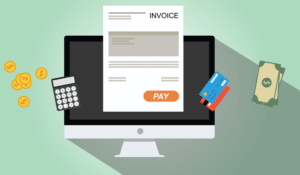Content

Two prevalent methods to determine the uncollectible accounts are the percentage sales method and the accounts receivables aging method. The estimation is typically based on credit sales only, not total sales (which include cash sales). In this example, assume that any credit card sales that are uncollectible are the responsibility of the credit card company. It may be obvious intuitively, but, by definition, a cash sale cannot become a bad debt, assuming that the cash payment did not entail counterfeit currency.
Changes in credit policies, the aging of accounts receivable, and economic conditions can influence this adjustment. When the age of accounts varies significantly or inconsistent payment histories are present, using the age-based estimation method to manage accounts may not be effective. The allowance for doubtful accounts is estimated based on the age of each account, which is useful when there is a large number of accounts with varying collection histories. By creating an allowance for doubtful accounts, a company can anticipate the loss due to bad debt and account for it in advance. The doubtful account balance is a result of a combination of the above two methods. The risk method is used for the larger clients (80%), and the historical method for the smaller clients (20%).
Heating and Air Company
The most prevalent approach — called the “percent of sales method” — uses a pre-determined percentage of total sales assumption to forecast the uncollectible credit sales. On the balance sheet, an allowance for doubtful accounts is considered a “contra-asset” because an increase reduces the accounts receivable (A/R) account. In https://www.bookstime.com/ the example above, we estimated an arbitrary number for the allowance for doubtful accounts. There are two primary methods for estimating the amount of accounts receivable that are not expected to be converted into cash. For example, it has 100 customers, but after assessing its aging report decides that 10 will go uncollected.
Then, decrease your ADA account by crediting your Allowance for Doubtful Accounts account. Use the percentage of bad debts you had in the previous accounting period to help determine your bad debt reserve. The only impact that the allowance for doubtful accounts has on the income statement is the initial charge to bad debt expense when the allowance is initially funded.
Allowance for Doubtful Accounts: How to Calculate It and Record Journal Entries
The allowance reduces the gross accounts receivable balance to $1,900,000, providing a more realistic representation of what the company expects to receive. It provides a more accurate picture of the company's financials by including the expected level of uncollectible accounts. However, 10% of receivables that had not paid after 30 days might be added to the allowance for bad debt. The doubtful accounts will be reflected on the company’s next balance sheet, as a separate line. Doubtful accounts are considered to be a contra account, meaning an account that reflects a zero or credit balance.
- If it does not issue credit sales, requires collateral, or only uses the highest credit customers, the company may not need to estimate uncollectability.
- Every company or industry will have customers who purchase items on a credit basis, and thus a certain amount will be owed.
- Note that some authors and companies may refer to the allowance account as Allowance for Uncollectible Expense, Allowance for Bad Debts or Provision for Bad Debts.
- If the allowance is less than the amount of these overdue receivables, the allowance is probably insufficient.
- In the case of the allowance for doubtful accounts, it is a contra account that is used to reduce the Controlling account, Accounts Receivable.
As a small business owner, you take a giant leap of faith every time you extend credit to your customers. Even with the most stringent analysis of a customer’s ability to pay, there’s going to be a time when a customer (or two) doesn’t pay what they owe. Companies use a double-entry accounting system to record the allowance normal balance of accounts for doubtful accounts. Let’s use an example to show a journal entry for allowance for doubtful accounts. Your allowance for doubtful accounts estimation for the two aging periods would be $550 ($300 + $250). Companies have been known to fraudulently alter their financial results by manipulating the size of this allowance.
Risk Classification Method
Companies use this contra-asset to manage their accounts receivable balances. In accounting, accounts receivable details the money that a company is owed by its customer base and has yet to receive payment. Review the largest accounts receivable that make up 80% of the total receivable balance, and estimate which specific customers are most likely to default. Then use the preceding historical percentage method for the remaining smaller accounts. This method works best if there are a small number of large account balances. The second method of estimating the allowance for doubtful accounts is the aging method.

If a customer purchases from you but does not pay right away, you must increase your Accounts Receivable account to show the money that is owed to your business. The Allowance for Doubtful Accounts is a contra-asset account that estimates the future losses incurred from uncollectible accounts receivable (A/R). The first step in accounting for the allowance for doubtful accounts is to establish the allowance.
Historical percentage
For example, a company may assign a heavier weight to the clients that make up a larger balance of accounts receivable due to conservatism. For example, a company has $70,000 of accounts receivable less than 30 days outstanding and $30,000 of accounts receivable more than 30 days outstanding. Based on previous experience, 1% of accounts receivable less than 30 days old will be uncollectible, and 4% of those accounts receivable at least 30 days old will be uncollectible. By analyzing such benchmarks, businesses can make informed decisions about their approach to managing their accounts receivable and avoiding potential financial losses. The specific identification method allows a company to pick specific customers that it expects not to pay. In this case, our jewelry store would use its judgment to assess which accounts might go uncollected.

Using the example above, let’s say that a company reports an accounts receivable debit balance of $1,000,000 on June 30. The company anticipates that some customers will not be able to pay the full amount and estimates that $50,000 will not be converted to cash. Additionally, the allowance for doubtful accounts in June starts with a balance of zero. The allowance is an estimated reserve for potential bad debts, while bad debt expense is the actual amount recognized as a loss when a specific account is deemed uncollectible. The allowance for doubtful accounts resides within the “contra assets” division of your balance sheet.
Allowance for Doubtful Accounts
This will help present a more realistic picture of the accounts receivable amounts you expect to collect, versus what goes under the allowance for doubtful accounts. Also known as “bad debts,” these outstanding accounts typically originate from credit sales that are never settled by customers. Unfortunately, this is an inherent risk of extending credit to your customers. The allowance for doubtful accounts is recorded as a line item on a company’s balance sheet. An allowance for doubtful accounts, or bad debt reserve, is a contra asset account (either has a credit balance or balance of zero) that decreases your accounts receivable.